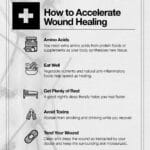Steri-strips, those small adhesive bandages often used after surgery, typically fall off on their own within 10-14 days. However, it’s not uncommon for them to remain adhered for longer, sometimes up to three weeks or even a bit more. While this can be a little concerning, it’s usually not a cause for alarm. This guide provides clear, practical advice on what to do if your steri-strips haven’t fallen off after three weeks.
Understanding Steri-Strip Timeframes
Steri-strips act like miniature stitches, supporting your incision as it heals. How long they stay on can vary based on several factors:
- Incision Location: Steri-strips on areas with more movement or tension (like knees or elbows) may take longer to detach.
- Individual Healing: Just as some people recover from a cold faster than others, wound healing varies. Factors like age, overall health, and nutrition can influence healing time.
- Adhesive Strength and Type: Different types of steri-strips have varying adhesive properties, which might affect how long they adhere.
- Surgical Procedure: Post-operative care instructions vary by procedure. For instance, after breast augmentation or body contouring, steri-strips may be left on for 2-3 weeks, sometimes longer. Your surgeon’s instructions for your specific procedure always take precedence.
What to Do After 3 Weeks
If your steri-strips are still on after three weeks, the most important step is to consult your surgeon. They are the best source of personalized advice, as they know your specific incision and healing progress. They might suggest leaving the steri-strips in place a bit longer, or they may advise you on how to safely remove them.
Removing Steri-Strips at Home (Only with Your Surgeon’s Approval)
If your surgeon gives you the go-ahead to remove the steri-strips yourself, follow these steps:
1. Soften the Adhesive: Take a warm shower or bath, or apply a warm, damp compress to the area. This helps loosen the adhesive, making removal easier and minimizing discomfort.
2. Gentle Peeling: Once the adhesive is softened, carefully lift a corner of a steri-strip. If it starts to peel, continue slowly and gently. Never rip or yank a steri-strip.
3. Trimming Stubborn Strips: If a steri-strip resists peeling, or if it’s stuck to a scab, do not pull. Instead, use clean, sharp scissors to carefully trim the loose edge of the strip. This prevents pulling on the skin or scab, which could reopen the wound or disrupt healing.
4. Post-Removal Care: Once the steri-strips are removed, gently clean the incision area with mild soap and water, pat it dry, and follow any post-operative wound care instructions provided by your surgeon. This may include applying antibiotic ointment or keeping the area covered.
When to Contact Your Surgeon Immediately
While some lingering steri-strips are harmless, certain symptoms warrant prompt medical attention. Contact your surgeon immediately if you experience:
- Increased pain or tenderness around the incision
- Redness, swelling, or warmth around the incision
- Drainage of pus or fluid from the incision
- Fever
- The steri-strips are firmly adhered and cannot be gently removed after soaking
FAQs: Addressing Common Concerns
Q: Is it normal to feel discomfort during steri-strip removal?
A: Some mild discomfort is normal. Soaking the area beforehand can make removal less painful. However, sharp pain is not typical and should be reported to your surgeon.
Q: Will steri-strips cause scarring?
A: Steri-strips actually help minimize scarring by supporting the edges of the incision. While some scarring is a natural part of healing, steri-strips can help ensure the scar is as minimal and neat as possible. Discuss scar care options with your surgeon.
Q: What if my steri-strips won’t budge at all?
A: Never force removal. Consult your surgeon. They can safely remove the steri-strips in their office and assess your incision.
Q: What if my steri-strips are stuck to a scab?
A: Avoid pulling. Soaking may not be ideal, as it could soften the scab. Try gently peeling an edge, trimming the loose part with scissors, or consult your surgeon for removal.
Ongoing Research
Research into wound healing and closure techniques is ongoing. Scientists are continually exploring new adhesives and methods to improve healing and minimize scarring. While this article reflects current best practices, remember that medical knowledge is constantly evolving. Your surgeon is the best source of the most current, evidence-based advice.
Conclusion
While finding steri-strips still attached after several weeks can be unsettling, it’s often a normal part of the healing process. Always consult your surgeon before attempting removal at home and follow their specific post-operative care instructions. They are your best resource and can guide you through your recovery journey, ensuring optimal healing and minimizing potential complications.
- Unveiling Bernhard Caesar Einstein’s Scientific Achievements: A Legacy in Engineering - July 15, 2025
- Uncover who is Jerry McSorley: CEO, Family Man, Business Success Story - July 15, 2025
- Discover Bernhard Caesar Einstein’s Scientific Contributions: Unveiling a Legacy Beyond Einstein - July 15, 2025















